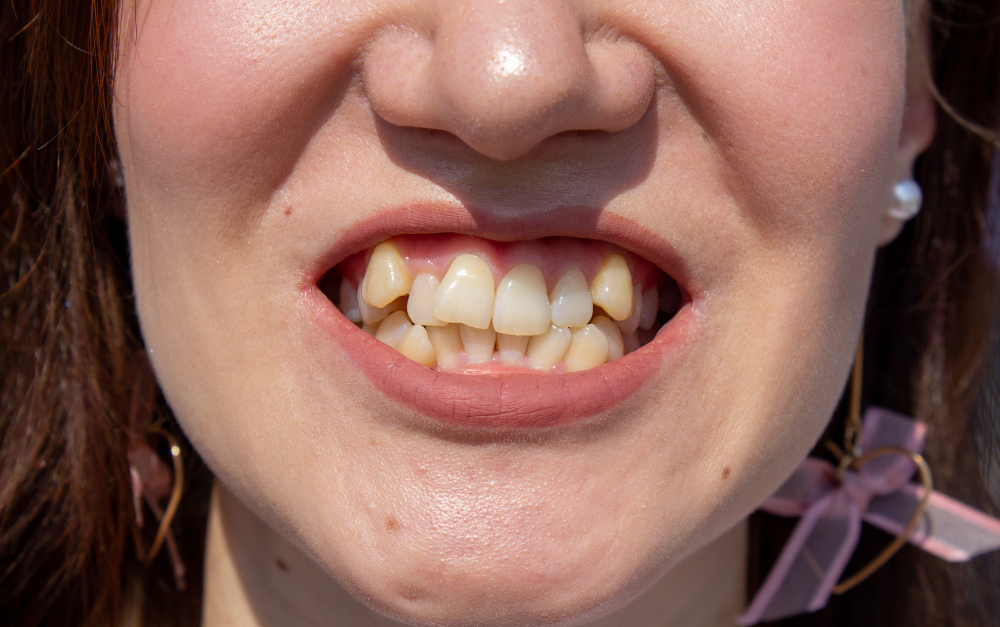What is malocclusion? It’s a common dental problem affecting many people around the world. Simply put, malocclusion means your teeth are not aligned properly when you close your mouth. This misalignment can cause various problems, not just in the mouth but in your overall health. Chewing, speaking, and even breathing can be affected if malocclusion is left untreated. That’s why understanding these bite issues and addressing them early is so important. Early detection can prevent potential complications and improve quality of life.
Types of Malocclusion and Their Characteristics
There are different types of malocclusion. Each type has its own causes and characteristics.
- Class I Malocclusion: This is the most common type. The bite is normal, but the teeth are crowded or positioned incorrectly.
- Class II Malocclusion: Often called an overbite, this occurs when the upper teeth significantly overlap the lower teeth.
- Class III Malocclusion: This is known as an underbite, where the lower teeth overlap the upper teeth.
Apart from these classes, other bite issues can occur:
- What is a deep bite? It happens when the upper front teeth cover too much of the lower teeth. Causes of a deep bite can include genetics or habits like thumb-sucking.
- What is a crossbite? It’s when some upper teeth sit inside the lower teeth, which can happen with just the front teeth or only the back teeth.
Here are some real-life examples to help identify these:
- When someone smiles and you see very little of their lower teeth, they may have a deep bite.
- If your dentist mentions one jaw is more pronounced when you smile or chew, it might be a case of crossbite or underbite.
Seeing these issues clearly in everyday situations can prompt early action, minimizing complications.
Causes and Consequences of Malocclusion
Both genetics and environmental factors play a role in causing malocclusion. You might inherit it from family members, or it might occur due to habits like thumb-sucking, prolonged pacifier use, or injury to the jaw. Adults can develop what causes a crossbite in adults because of teeth shifting over time or due to missing teeth.
If you notice uneven teeth or difficulty in chewing, these could be signs of bite issues in both children and adults.
Leaving what is malocclusion untreated can lead to various problems. You may experience pain while chewing, speech difficulties, or even sleep apnea. Dental health might decline, leading to cavities or gum disease. Additionally, some people might suffer from headaches or jaw pain, impacting their daily life.
Recognizing these early can save one from complications and lead to a healthier, more comfortable life.
Diagnosing and Treating Malocclusion
Diagnosing what is malocclusion of teeth begins with a visit to the dentist. Dentists or orthodontists diagnose bite problems through regular check-ups. They may ask you to bite down and see how your teeth align. X-rays might be taken to get a clear picture of your jaw and teeth position.
Once diagnosed, treatment can vary. Here are some common treatments:
- Braces: The most common method, used to straighten teeth and align the bite over time.
- Retainers: Often used post-braces to maintain the new position of teeth.
- Surgery: In severe cases, surgery might be needed to correct jaw position.
Through these treatments, the goal is to achieve a regular bite and functional teeth, minimizing any discomfort caused by bite issues.
The benefits of early diagnosis and treatment can’t be overstated. Correcting what is malocclusion improves oral hygiene and boosts self-esteem, significantly enhancing one’s quality of life.
Living with orthodontic treatment involves some lifestyle changes. Eating softer foods, maintaining excellent dental hygiene, and attending regular follow-up appointments are key. Post-treatment, maintaining dental health ensures long-lasting results.
Keeping track of these essential preventive measures encourages healthy teeth and a beautiful smile. Addressing concerns like what causes deep bite early can return significant health benefits, minimizing long-term complications.
References
1. https://www.jax.org/news-and-insights/jax-blog/2016/july/how-to-spot-malocclusion-in-research-mice
2. https://www.surreybraces.co.uk/blog/the-problems-caused-by-malocclusion/
5. https://buraksercanercin.co/blog/buck-teeth/
6. https://www.ncbi.nlm.nih.gov/books/NBK592395/
7. https://www.sciencedirect.com/topics/medicine-and-dentistry/malocclusion
8. https://medlineplus.gov/ency/article/001058.htm
9. https://pmc.ncbi.nlm.nih.gov/articles/PMC10608509/
10. https://orthodonticassoc.com/braces-invisalign/comprehensive-guide-to-common-bite-problems/
Keywords
#teeth, #Malocclusion, #Bite, #ComprehensiveGuide, #BiteIssues, #lowerteeth, #deepbite, #lower, #early, #Class

